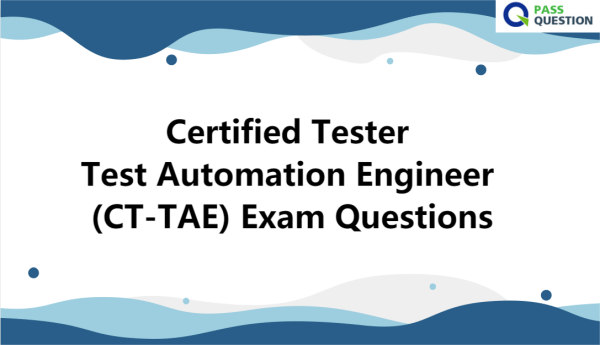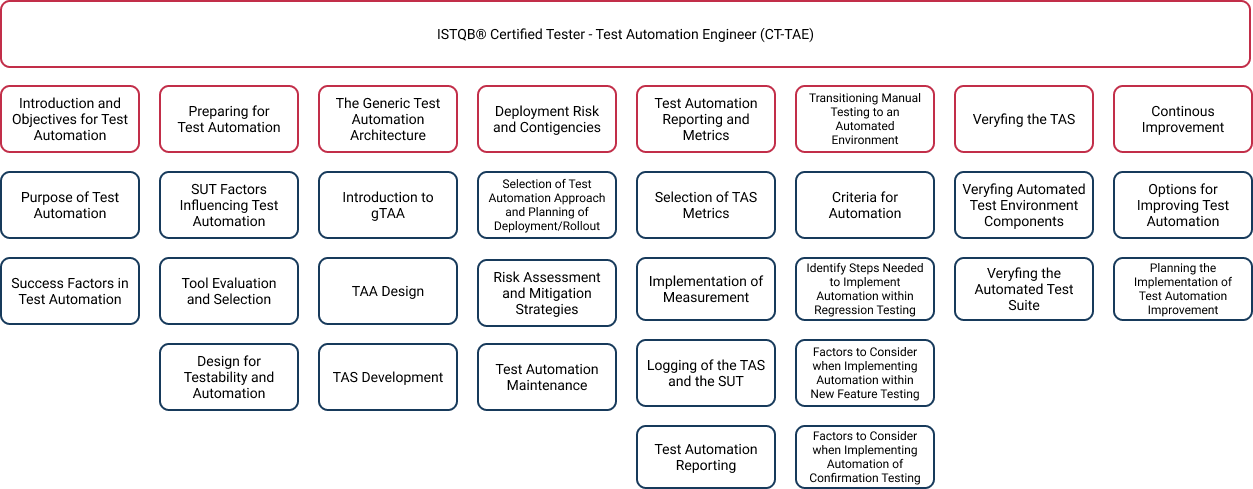Certified Tester Test Automation Engineer (CT-TAE) Exam Questions
If you're planning to take the CT-TAE exam, PassQuestion is an excellent resource that can help you prepare for and pass the exam with ease. PassQuestion provides a comprehensive set of Certified Tester Test Automation Engineer (CT-TAE) Exam Questions that cover all the topics and concepts that you need to know to excel in the exam. These Certified Tester Test Automation Engineer (CT-TAE) Exam Questions are designed to help you identify areas of weakness, test your knowledge, and simulate the actual exam environment. With PassQuestion Certified Tester Test Automation Engineer (CT-TAE) Exam Questions, you can confidently prepare for the exam and increase your chances of success.

Here are some of the key benefits of using PassQuestion CT-TAE Exam Questions:
Comprehensive Coverage: CT-TAE Exam Questions cover all the topics and concepts that are part of the CT-TAE certification exam. The questions are designed to test your understanding of the various concepts related to test automation, including test design, implementation, execution, and maintenance.
Realistic Exam Environment: CT-TAE Exam Questions are designed to simulate the actual CT-TAE certification exam. This means that you'll get a feel for the real exam environment and be better prepared to tackle the actual exam.
Customizable Practice Exams: CT-TAE Exam Questions allow you to customize your practice exams according to your needs. You can choose to take a full-length practice exam or focus on specific topics or areas of weakness.
Time-Saving: CT-TAE Exam Questions are a time-saving solution for busy professionals who want to prepare for the CT-TAE certification exam. With PassQuestion's exam questions, you can prepare for the exam at your own pace and on your own schedule.
Certified Tester Test Automation Engineer (CT-TAE) Exam Details
The ISTQB Test Automation Engineer (CT-TAE) certification focuses on the design, development, and maintenance of test automation solutions. It also covers the concepts, methods, tools, and processes for automating dynamic functional tests, and the relationship of those tests to test management, configuration management, defect management, software development processes, and quality assurance. Methods described are generally applicable across a variety of software life cycle approaches, types of software systems, and test types.
The Test Automation Engineer certification is aimed at people who already have experience in software testing and who wish to further develop their expertise in automation testing. To gain this certification, candidates must hold the Certified Tester Foundation Level certificate.
Exam Information
No. of Questions: 40
Total Points: 75
Passing Score: 49
Exam Length (mins): 90 (+25% Non-Native Language)
Certified Tester Test Automation Engineer (CT-TAE) Exam Topics

View Online Certified Tester Test Automation Engineer CT-TAE Free Questions
1. What are the four horizontal layers of the gTAA?
A.Test adaptation, test execution, test design, test definition
B.Test generation, test execution, test definition, test APIs
C.Test generation, test definition, test execution, test adaptation
D.Test definition, test execution, test reporting, test adaptation
Answer: C
2. You are currently designing the TAA of a TAS. You have been asked to adopt an approach for automatically generating and executing test cases from a model that defines the SUT. The SUT is a state-based and event-driven that is described by a finite-state machine and exposes its functionality via an API. The behavior of the SUT depends on hardware and communication links that can be unreliable.
Which of the following aspects is MOST important when designing the TAA in this scenario?
A.Looking for tools that allows direct denoting of exceptions and actions depending on the SUT events.
B.Adopting a test definition strategy based on classification tree coverage for the test definition layer.
C.Looking for tools that allow performing setup and teardown of the test suites and the SUT.
D.Adopting a test definition strategy based on use case/exception case coverage for the definition layer.
Answer: C
3. If model-based testing has been selected for the overall test automation approach for a project, how does that influence the layers of the TAA?
A.All layers are used, but the test generation layer will be automated based on the defined model
B.There will be no need for the execution layer
C.No adaptation will be needed because the interfaces will be defined by the model
D.There will be no need to design the tests for the API because those will be covered by the model
Answer: A
4. You are reviewing the testability of your SUT.
Which of the following BEST refers to the characteristic of OBSERVABILITY?
A.The ability of the SUT to perform its intended function for a specified period of time
B.The ability to exercise the SUT by entering inputs, triggering events and invoking methods
C.The ability of the SUT to prevent unauthorized access to its components or data.
D.The ability to identify states, outputs, intermediate result and error messages in the SUT
Answer: D
5. You have inherited a TAS that is working well it uses keyword-driven scripting and was well architected. The automation architect who built the system has now moved on to another company. The TAS is working across several projects and has a multiple library of keywords, categorised by project. The individual project teams maintain these keyword scripts.
Based only on the given information, what is the MOST significant risk for the TAS?
A.The keyword driven scripts may become out of date if not maintained
B.The level of abstraction, coupled with the departure of the architect may make the system hard to maintain
C.New projects may not work as well with the TAS as the current projects
D.Because the keyword scripts are maintained by different teams, there is a likelihood that good coding standards are not followed
Answer: B
- TOP 50 Exam Questions
-
Exam
All copyrights reserved 2025 PassQuestion NETWORK CO.,LIMITED. All Rights Reserved.

